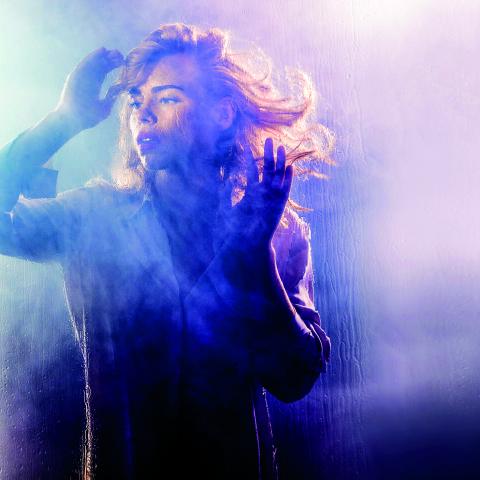This wonderful Cornish workshop and museum is dedicated to the legacy of studio pottery trailblazer Bernard Leach
Global broadcast
Global broadcast
6 Oct 2017
Live screenings are bringing powerful performances from top theatres to cinemas worldwide – But what are the challenges? Mark Fisher finds out.
Imagine you’re a singer taking to the stage of London’s Royal Opera House. To perform at such a prestigious address is a big deal. Now imagine how much more of a big deal it would be if as well as the 2,200 spectators looking on from the auditorium, you had audiences in their hundreds of thousands watching from around the world.
Until the last decade or so, such an idea would have been preposterous. Now, thanks to the technological advances of live screening, it’s happening on a monthly basis. “It makes a difference to the artists to know they will be performing literally on a world stage,” says Alex Beard, chief executive of the Royal Opera House.
Since 2008, live broadcasts have become a standard feature of his company’s programme, with six operas and six ballets broadcast to more than 470 venues across the UK every year. “We’re pretty much the only organisation in the UK that can get artists of the calibre of Jonas Kaufmann, world-leading tenor; Anna Netrebko, world-leading soprano, and Natalia Osipova, wonderful ballerina, on our stages because of the busyness of their schedule,” says Beard. “We feel we have an obligation to share that experience with as many people as possible.”
There’s a similar philosophy at NT Live, the National Theatre’s broadcasting arm, which now accounts for a quarter of the organisation’s audience. Having launched in 2009, it routinely goes out to more than 650 venues in the UK and over 2,000 worldwide. Broadcasting around 14 shows a year, it has reached a total audience in excess of 5.5 million people – 600,000 saw Benedict Cumberbatch in Hamlet alone.
Producer Emma Keith aims to reflect the full breadth of the theatre’s output – and, indeed, that of neighbouring theatres such as the Young Vic and the Old Vic – which means choosing not only the sure-fire hits, but also the less well known. “We want Shakespeare and the classics, but we want to ensure we’ve got new work as well,” she says. “It’s about showcasing the best of the theatre that’s out there.”
Like every innovation, live screenings were initially a cause for concern. Would the broadcasts steal audiences? If people could see Cumberbatch playing Hamlet in their nearest multiplex, would they be put off seeing a less starry production by the local rep? Would arts centres take the easy way out by scheduling a broadcast instead of a flesh-and-blood performance?
Happily, those fears have proved unfounded. Research undertaken last year indicated that cinema screenings, DVD recordings and online broadcasts have not reduced the appetite for live performance. In fact, the reverse may be true. “It’s bringing in an audience that’s lapsed or that otherwise might not attend,” says Keith. “We then find those people stay and will come and see other things.”
Those who are already frequent attenders tend to go to cinema broadcasts in addition to live events, not as an alternative. “No-one regards it as being a substitute for being in the same theatre, sharing the same molecules as someone sings their hearts out,” says Beard. “But the experience people have in the cinema is one of being transported and engaged.” Keith agrees: “The audience should have as good an experience, albeit a different experience.”
It used to be that performances would be recorded for archive purposes by a single camera placed at the back of the auditorium. The resultant videos would be flat and lifeless, squashing a show’s theatrical spirit. Had they been shown in a cinema, they’d have put audiences off for good. Now, producers have figured out how to make a trade-off between the art of cinema and the art of live performance, creating a hybrid that does justice to both.
“We’ve learnt a lot about how to balance, on the one hand, capturing the patterns and the movement and, on the other hand, doing what cinema is good at and lasering in on the intense, up-close emotion,” says Beard, who is delighted also by the educational opportunities that screenings make possible.
At NT Live, a dedicated camera director develops a filming script, does two camera rehearsals and invites the whole creative team to a test screening. Before the broadcast, lighting must be tweaked, costumes re-assessed and actors fitted with radio mics. All the preparation is in order to keep the event genuinely live, something that is central to the concept.
“Anything could happen,” says Keith. “Actors might miss a cue, a camera might not be working properly and you have to be able to respond in the moment without it affecting the audience – just like a stage manager in the theatre would. “This isn’t a record for posterity; this is a capture of that performance on that evening and it’s important for us to share that frisson and electricity.”
Image: Billie Piper in Simon Stone's production of Federico Garcia Lorca's Yerma.
About the Author
MARK FISHER
JOIN OUR MAILING LIST
Become an instant expert!
Find out more about the arts by becoming a Supporter of The Arts Society.
For just £20 a year you will receive invitations to exclusive member events and courses, special offers and concessions, our regular newsletter and our beautiful arts magazine, full of news, views, events and artist profiles.
FIND YOUR NEAREST SOCIETY
MORE FEATURES
Ever wanted to write a crime novel? As Britain’s annual crime writing festival opens, we uncover some top leads
It’s just 10 days until the Summer Olympic Games open in Paris. To mark the moment, Simon Inglis reveals how art and design play a key part in this, the world’s most spectacular multi-sport competition




